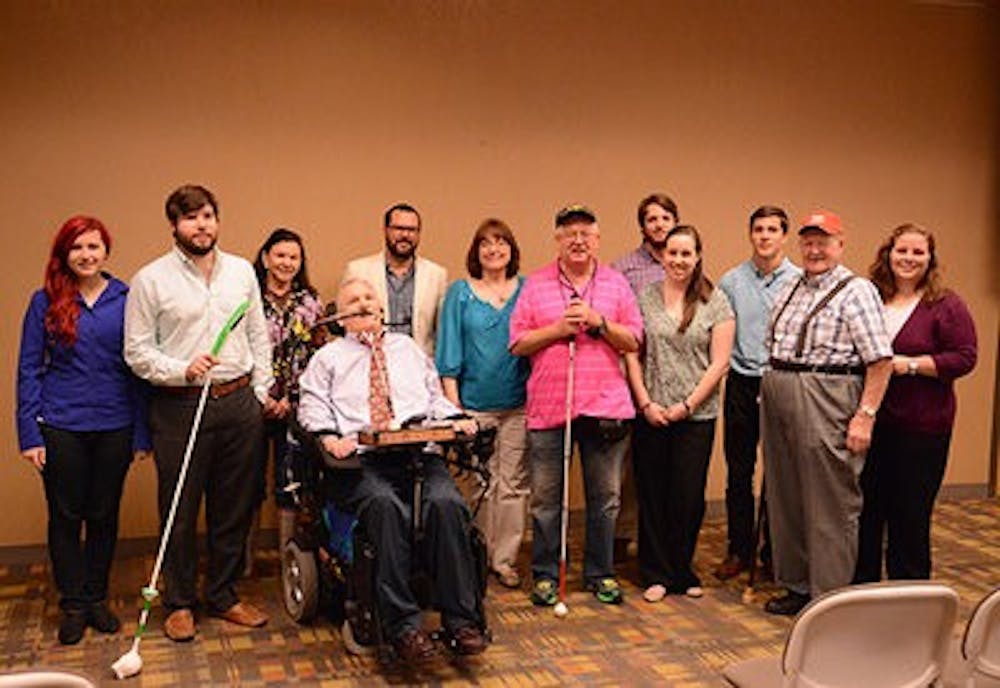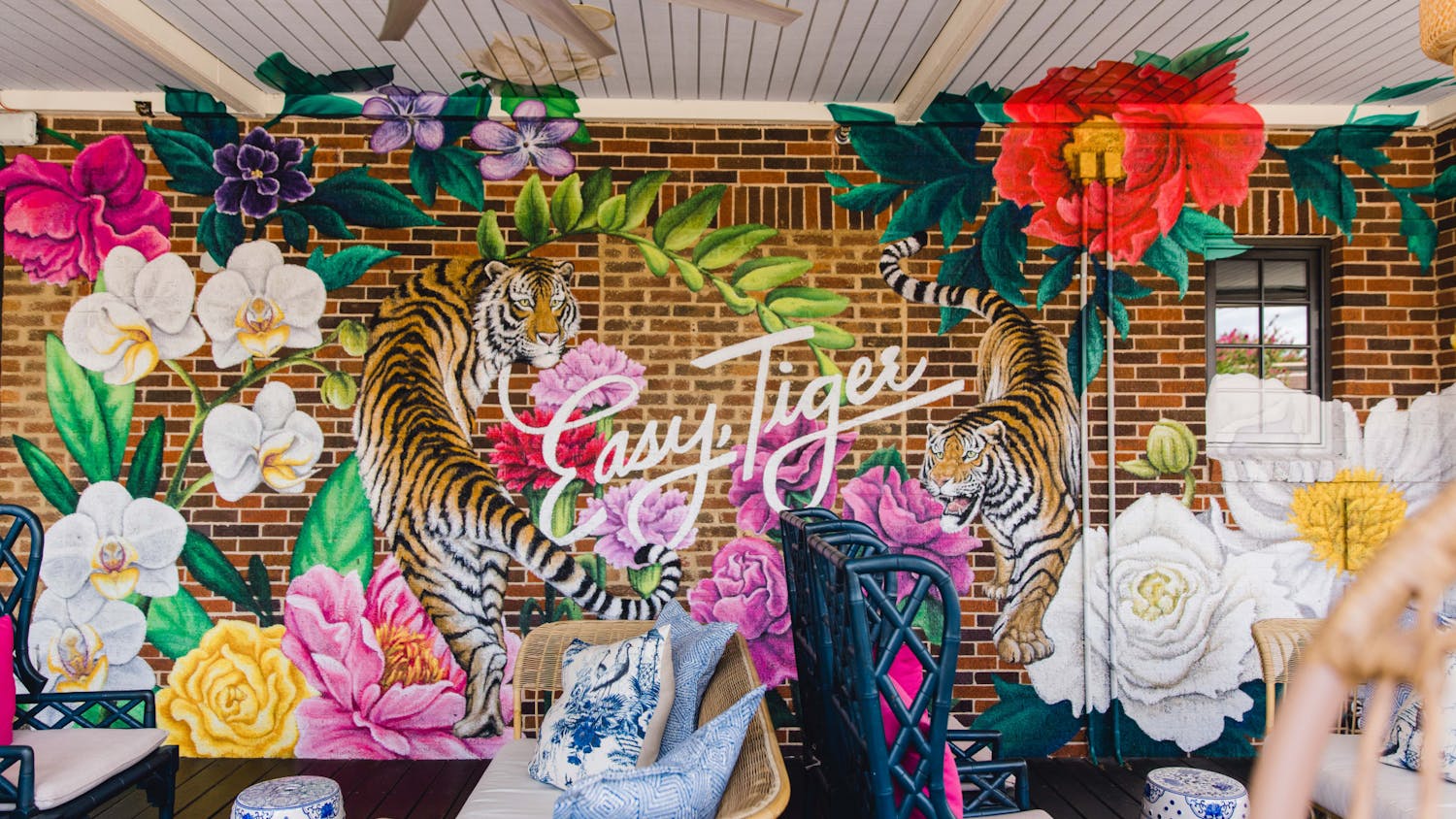The Assistive Technology Collaborative Project is a studio involving the department of special education, rehabilitation and counseling and the department of industrial design.
The project consists of teams that include of two industrial design undergraduate students, a rehabilitation graduate student and a handicapped veteran.
Trevor Johnson and Amelia Wilson, seniors in industrial design, and Brooke Molnar, recent graduate with a master's degree in collaborative special education, worked together with client Wesley Self, a veteran suffering from retinitis pigmentosa.
"Retinitis pigmentosa is a degenerative disease that does damage to the retina," Johnson said. "He has no peripheral vision, and his wife says it's like looking through a straw. As a result, he also has night blindness."
Molnar did research about the eye disease, being mainly involved at the beginning of the studio.
"My main role was to interact with the veteran and help facilitate the conversation about difficulties he may have and wants he may have," Molnar said.
Johnson and Wilson created a new cane to assist Self's eye condition.
"For the handle, we made a lanyard that went around your wrist that had a magnet," Johnson said. "If the cane was to get knocked off, it would snap away, kind of like the connectors for Apple. We had that magnetic release lanyard."
In addition to the lanyard, the duo made updates to the cane tip and created a special vibrating handle.
"The tip of the cane can roll in all directions," Johnson said. "It has a tiny sensor that can determine the distance to an object and relay that to a micro-processor. It essentially can be used like a metal detector except it senses objects, walls and obstacles for people who can't see."
The process from beginning to end involved sketches and three 3D printed prototypes, according to Johnson.
Other students in the studio tested the prototypes.
"They just kind of closed their eyes and walked up stairs," Johnson said. "One of these [tests], I just put stuff out in the hallway."
Leslie Dickson, senior in industrial design, also has limited vision due to a birth defect. She was also part of the studio and tested the cane.
"Leslie, she actually does have really limited vision," Johnson said. "She was in our studio. It worked out [for her]. It was actually really cool to see it work out."
It worked out for Self as well, which was a very gratifying feeling, according to Wilson.
"My favorite part of the project was presenting prototypes to our client," Wilson said. "It was awesome to see what features he got excited about and the process of figuring out how to improve them was challenging, but fun. It was super gratifying seeing how much our client liked our functioning prototype."
Molnar agreed, saying that presenting the final product to the veteran was the most rewarding part of the experience for her.
Part of the studio assignment is to put in a patent for the final product.
The project is not completely done, however. Johnson is working with Jerrod Windham, assistant professor of industrial design and one of the leaders of the project, to fix some of the issues with the cane to make it able to be manufactured.
"The way the cane connects isn't perfect," Johnson said. "We had problems with the connections because 3D printing is a little finicky. You can get pieces that snap off or don't fit right, so we need to fix how it all fits together. The model needs to be fixed to where you could actually mass produce it, and right now there are some issues with that."
While Self has the final project from the semester, Johnson plans to give him the final, reworked cane.
"I think we're probably going to give him the one we redo because it had those connection problems and it's hard to change the battery and stuff," Johnson said. "That's one thing I'm working on is getting a way for the battery to fit in easier, so you don't have to open the whole cane."
Johnson said he hoped the cane will be finished by the end of the summer.
Do you like this story? The Plainsman doesn't accept money from tuition or student fees, and we don't charge a subscription fee. But you can donate to support The Plainsman.





